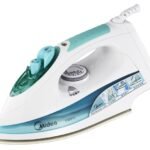# Smart Strategies to Cut Costs on Daily Essentials and Keep Your Budget in Check
In today’s economy, managing your finances effectively has become more crucial than ever. Rising prices can put a strain on household budgets, making it essential to find ways to cut costs on daily essentials. Fortunately, there are smart strategies you can employ to save money on groceries, household items, and other daily needs. This article will explore how to leverage coupons, bulk buying, and other savvy shopping techniques to help you keep your budget in check.
## Understanding Your Budget
Before diving into cost-cutting strategies, it’s vital to have a clear understanding of your budget. Track your income and expenses to identify areas where you might be overspending. By knowing where your money goes, you can pinpoint specific categories—like groceries and household items—that may need adjustments. Setting a monthly budget allows you to allocate a specific amount for essentials, creating a framework for your cost-cutting efforts.
## 1. Mastering Coupons
### 1.1. The Power of Digital Coupons
Digital coupons have revolutionized the way we save money. Many grocery stores and retailers offer apps that allow you to clip coupons directly to your loyalty card. This means you don’t have to carry physical coupons, and you can easily access a wide variety of discounts. Regularly check your favorite stores’ apps for new deals and promotions.
### 1.2. Use Coupon Websites and Apps
Websites like RetailMeNot, Coupons.com, and Honey aggregate coupons from various retailers. By spending a little time searching these sites, you can find additional savings on items you already plan to buy. Furthermore, apps like Ibotta and Rakuten offer cashback on purchases when you scan your receipts. These platforms can significantly enhance your savings when used consistently.
### 1.3. Stack Coupons
Some stores allow you to stack manufacturer coupons with store coupons. This means if you have a manufacturer’s coupon for a specific product and the store is running a sale, you can use both to maximize your savings. Familiarize yourself with the coupon policy of your local stores to take full advantage of this strategy.
### 1.4. Timing Your Purchases
Timing is everything when it comes to couponing. Many stores have sales cycles, and certain items go on sale at specific times of the year. For instance, holiday-related items often get discounted after the holiday season. Keeping track of these cycles allows you to plan your purchases around the best sales and maximize your savings.
## 2. Bulk Buying: A Smart Investment
### 2.1. Identify Non-Perishables
Bulk buying can be a fantastic way to save money, especially on non-perishable items. Foods like rice, pasta, canned goods, and frozen vegetables can be purchased in larger quantities at a lower unit price. Before you commit to bulk buying, consider how much space you have for storage and how quickly you will use the items.
### 2.2. Share Bulk Purchases
If you’re hesitant about buying in bulk due to storage concerns or the risk of spoilage, consider teaming up with friends or family. By pooling resources, you can share the cost and split the items, ensuring that nothing goes to waste. This cooperative approach allows you to enjoy the benefits of bulk buying without the downsides.
### 2.3. Buy in Bulk at Membership Warehouses
Membership warehouses like Costco and Sam’s Club offer significant savings on bulk items. While there is an upfront membership fee, the savings can quickly offset this cost if you regularly purchase bulk items. Focus on buying staples that you use frequently, and always compare prices to ensure you’re getting the best deal.
### 2.4. Plan Your Meals Around Bulk Purchases
When you buy in bulk, it’s smart to plan your meals around those items. If you purchase a large bag of rice, for example, consider making dishes that incorporate rice throughout the week. This not only helps you utilize your bulk purchases but also reduces food waste.
## 3. Smart Shopping Habits
### 3.1. Create a Shopping List
One of the simplest yet most effective ways to save money is to create a shopping list before heading to the store. Stick to your list to avoid impulse purchases, which can quickly add up. By planning your meals and making a list of necessary items, you can streamline your shopping experience and reduce unnecessary spending.
### 3.2. Compare Prices
Don’t settle for the first price you see. Take the time to compare prices between different stores or online platforms. Many grocery stores have price matching policies, allowing you to get the best deal without having to shop around. Apps like Flipp can help you view weekly ads and compare prices from various retailers in your area.
### 3.3. Buy Generic Brands
Often, generic or store-brand products can provide the same quality as name-brand items at a fraction of the price. Don’t be afraid to experiment with these alternatives. You may find that you prefer the taste or quality of a generic product, leading to additional savings in the long run.
### 3.4. Avoid Pre-Packaged Items
Pre-packaged and convenience items often come with a higher price tag. Instead of buying pre-cut vegetables or pre-marinated meats, consider purchasing whole items and preparing them yourself. This not only saves money but also allows you to control the ingredients and portion sizes.
## Conclusion
Cutting costs on daily essentials doesn’t have to be a daunting task. By employing smart strategies like mastering coupons, bulk buying, and developing savvy shopping habits, you can significantly reduce your expenses. Remember, the key is to plan ahead, stay organized, and remain mindful of your spending. As you incorporate these strategies into your routine, you’ll find that saving money on groceries, household items, and daily needs becomes second nature, allowing you to keep your budget in check and enjoy financial peace of mind.










